Moto X4 Review
Moto X4 Review
The X series is back
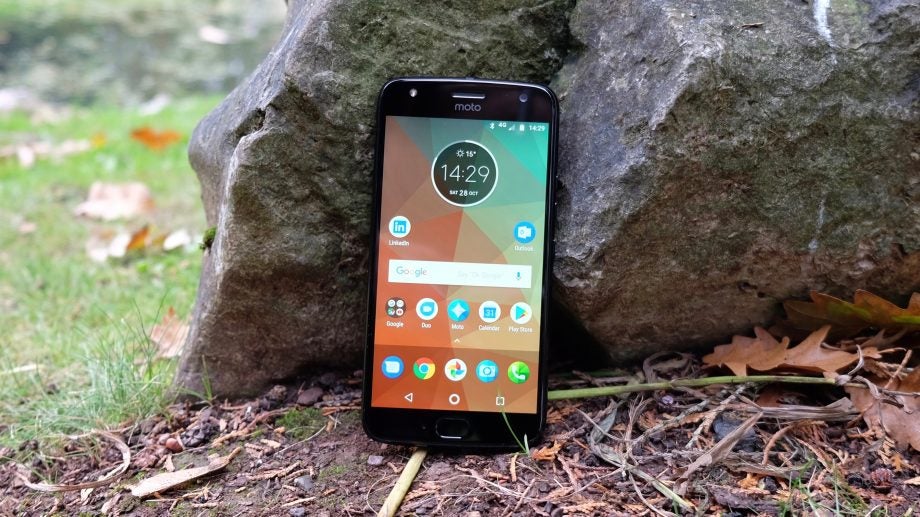
Verdict
Pros
- Sharp glass-backed design
- Crisp display
- Smooth performance
Cons
- Heavy
- Unreliable and gimmicky camera
- No AMOLED display
Key Specifications
- Review Price: £349
- 5.2-inch FHD screen
- 12-megapixel standard lens with an 8-megapixel 120 degree wide angle sensor rear camera
- 16-megapixel front camera
- Snapdragon 630 CP
- 4GB RAM, 64GB storage (microSD)
- 3000mAh battery
What is the Moto X4?
Motorola continues to turn out solid work with its affordable Moto E and G ranges, occasionally cutting loose with the weird and wonderful premium Z range – and there’s plenty more to come this year with MWC 2018 and (in all likelihood) the Moto G6 just around the corner.
But fans will remember a time not so long ago when the Moto X was an eye-catching highlight of the Android scene, providing style and poise at a mid-market price.
For those still pining for that seemingly bygone Moto era, the decidedly middle-class Moto X4 arrived in 2017. But is a crisp design and solid performance still enough for your £349/€399?
Moto X4 – Design
The Moto X4 is a handsome, well put-together phone. There’s a certain density to it that makes it feel like a premium product.
On first seeing it in the box, it appears quite small. At 148.4 x 73.4mm, it’s similar in size to the original Moto G5 – although at 8mm, the X4 is thinner.
Pick up the phone, however, and you’ll be in for a surprise. At 163g, it’s almost 20g heavier than the Moto G5, and the similarly priced Moto Z2 Play.
That density comes down to the phone’s construction. Alongside its metal frame, the rear of the Moto X4 is made of glass, which is very on-point in 2017. Although this adds weight to the phone – and you’ll be forever reaching for that microfibre cloth to wipe off your paw prints – the effect is undeniably appealing.
Related: Best smartphones
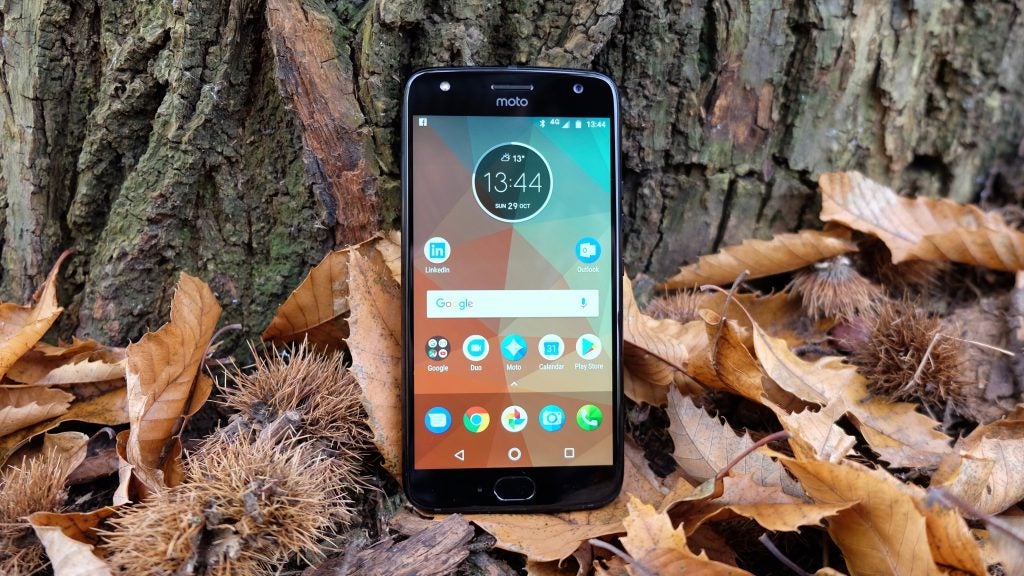
Coupled with its gently curved edges, the Moto X4 feels great in the hand. Just watch where you set it down, though: it has a habit of sliding off even seemingly flat surfaces.
Of course, one of the key reasons that the Samsung Galaxy S8 and iPhone X have glass rears is to support wireless charging. Disappointingly, this capability is absent here, meaning the X4’s glass rear is purely an aesthetic choice.
There’s a small antenna on top of the phone, joining the front and rear glass surfaces, but the rear is a pure glossy surface – aside from the trademark circular Motorola camera array.
With an IP68 rating, the Moto X4 is both water- and dust-resistant, and it retain its 3.5mm headphone jack – unlike the Moto Z.
While we’re on the subject of audio, there’s only one speaker here, but its position alongside the X4’s earpiece means that it’s at least front-facing. You won’t find yourself covering it up when watching videos or playing games in landscape view.
All three of the X4’s physical buttons are located along its right edge. The volume keys are small and sit in a slight recess, rather like an iPhone, while the power button is slightly longer and heavily textured. They’re nice and clicky, although made of plastic.
A responsive capacitive fingerprint sensor sits underneath the display, and does its job admirably. It isn’t a true home button by default, but you can make it so through the included Moto app.
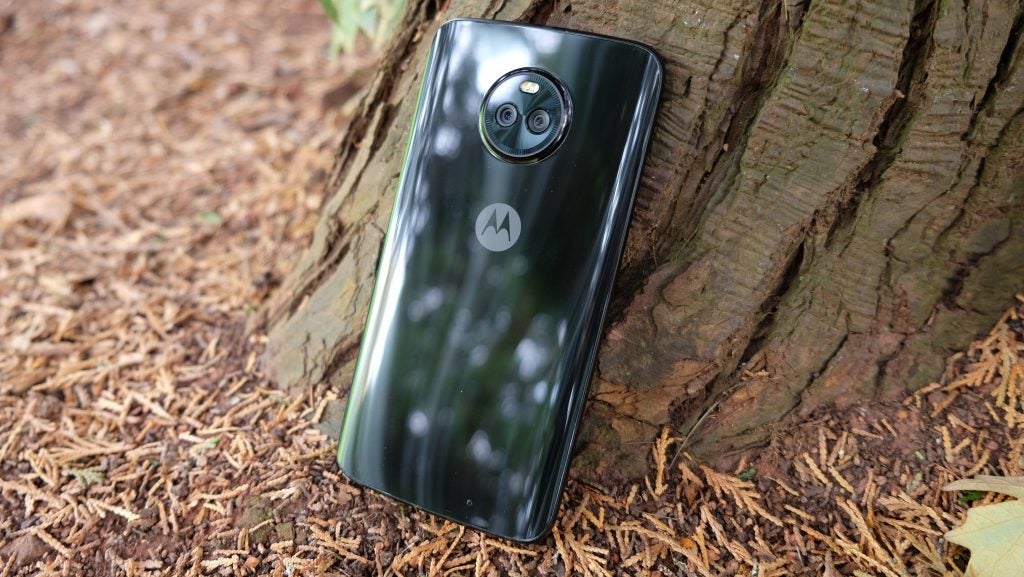
Note that the main thing that separates the Moto X4 from the Z range is a lack of Moto Mod support. Unless you’re one of the tiny percentage of mobile users already invested in Motorola’s modular ecosystem, this won’t be an issue.
Moto X4 – Screen
Motorola has gone back to the spirit of the earlier Moto X models when it comes to display size. You might question whether 5.2-inches should be classed as a small display, but relative to the wider Android field it undoubtedly is.
In general use the X4’s panel feels just right. Even those with large hands will struggle to stretch their thumb from the fingerprint sensor at the bottom to the the opposite top corner of the display, but it is possible to use the Moto X4 single-handed for typing out a message or scrolling through the app tray.
Overall, the X4’s screen is crisp and pleasant-looking. However, Motorola has opted for an LCD panel rather than AMOLED, which is disappointing given the X family’s heritage. It’s even more of a shame when you consider the company’s excellent Moto Display lockscreen notification system, which makes good use of AMOLED technology.
Related: Best value smartphones
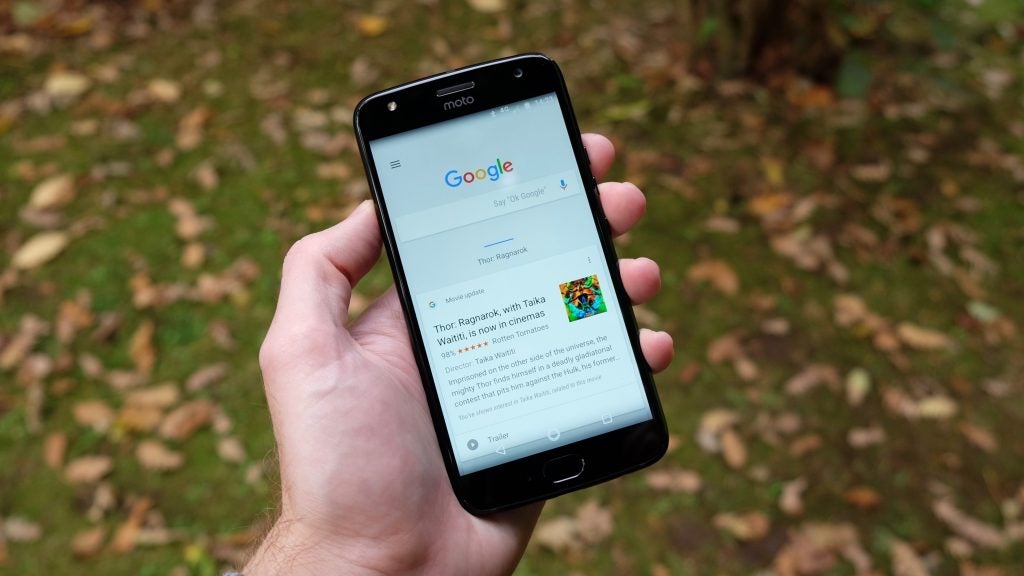
In use, however, the Moto X4 display is hard to fault. At 1080p it’s plenty sharp enough for a screen of this size, while brightness is on point and colours are rich and balanced. I compared it to the screen of a Moto G5S that I had to hand; the Moto X4 screen felt noticeably richer and closer to the surface glass.
In addition, there’s no ugly black border around the Moto X4 display, as there is on Motorola’s latest ‘premium-affordable’ smartphone. Of course, with a £130 difference in price, you’d expect some kind of advantage.
Moto X4 – Performance
When it comes to performance, don’t expect the Moto X4 to punch above its weight in the manner of the OnePlus 5. You can, however, expect it to run very well thanks to Qualcomm’s latest mid-range processor.
The Snapdragon 630 is the more efficient successor to the Snapdragon 626 that powers the Moto Z2 Play. Coupled with 3GB of RAM, it leads to solid performance across the board.
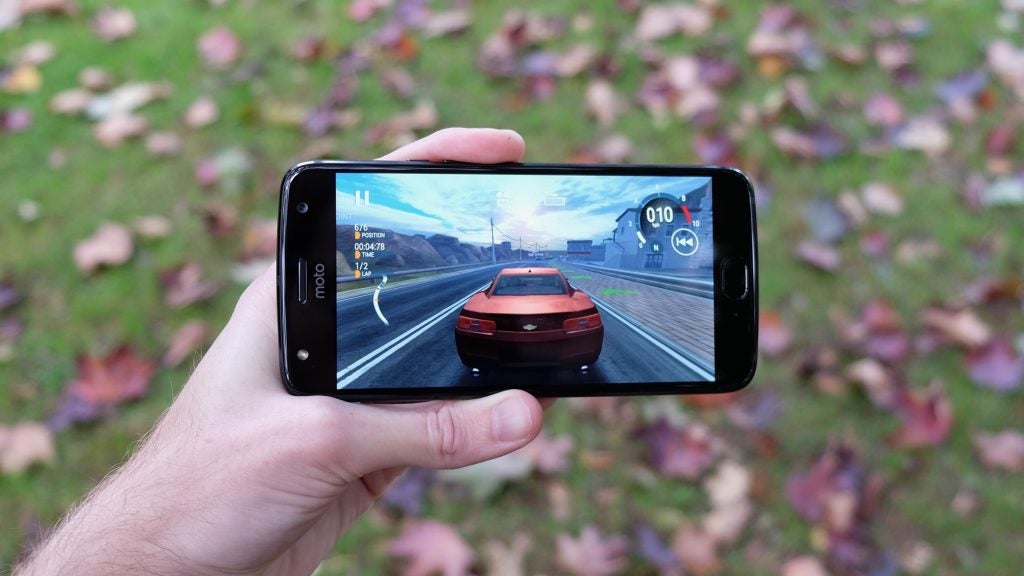
I didn’t notice any stuttering during general navigation, and even advanced 3D games such as Gear.Club and Unkilled ran without a hitch. Of course, such apps don’t run quite as smoothly, and they do take longer to load than on a device packing a Snapdragon 835 – but that’s as expected.
An average Geekbench 4 multi-core score of 4115 is roughly the same as the Moto G5S Plus managed with its older Snapdragon 626 SoC, and isn’t far off double the score of the Moto G5S with its Snapdragon 430.
On the storage front there’s a decent 32GB, although this is half that on offer with the Moto Z2 Play. You also get a microSD slot for expansion purposes.
Moto X4 – Software
Motorola’s software has always been excellent, and it feels and handles well on the Moto X4. However, a few rough edges seem to have creeped in.
This is a near-stock version of Android 7.1.1 that doesn’t feel too dissimilar to the experience you’ll get with one of Google’s Pixel phones. You get the same swipe-up system for accessing the app tray, a prominent Google search bar positioned in the middle of the homescreen by default, and Google Assistant under the virtual home button.
Swiping left provides quick access to Google Now, and the familiar card-based multitasking menu also features a swipe-based split-screen system for running two apps side by side.
Motorola has long been that rare manufacturer that doesn’t feel compelled to duplicate Google’s perfectly fine – and frequently outstanding – default apps. There’s no half-baked music app alongside Google Play Music, for instance, and Google Photos is the default photo app.
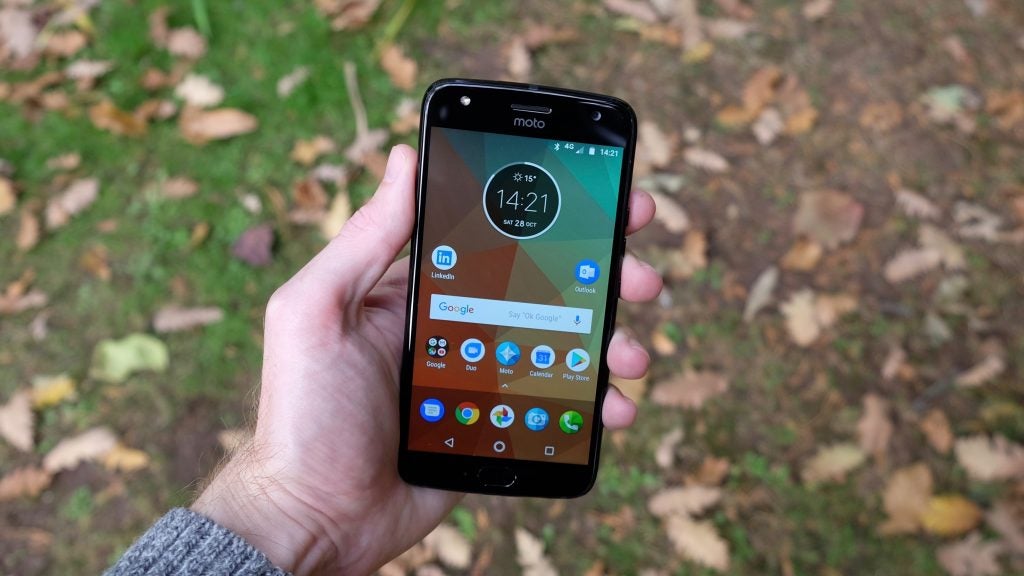
That said, Motorola has been tempted to include a few extras in the Moto X4, with mixed results.
Outlook is the main email app here, which clashes somewhat with the regular Gmail app. We’ll let that slide, however, since Outlook is a useful tool to have these days. The way it links your email with your calendar and all of your cloud services, in particular, is excellent for productivity.
Less welcome is the inclusion and prominent positioning of the LinkedIn app. It’s an oddly specific choice for a certain sub-section of users, revealing that Motorola sees this as a potential business phone. I suspect most people will want to remove it pretty sharpish.
Also rather strange is Motorola’s adoption of Amazon Alexa. That’s not to say that Amazon’s personal assistant isn’t a fine and useful tool for many people – it is – but its inclusion seems to bump up against the front-and-centre positioning of Google Assistant.
Rather curiously, Alexa is tucked away behind a Motorola-made Moto Alexa app. I didn’t even spot that this was here until a good few days into using the phone.
What’s more, when I did come to set up Alexa, I was stopped in my tracks. The app instructed me to “say the phrase that we show you,” but there was no such phrase offered and no means to continue on the screen. Weird.
Alexa was still usable despite this training phase meltdown, but it meant that activating the assistant vocally was a no-no – thus rather limiting its usefulness.
The presence of Motorola’s own Moto Voice provides a third voice-activated assistant, confusing things further, although this one is limited to providing information about the Moto X4 itself.
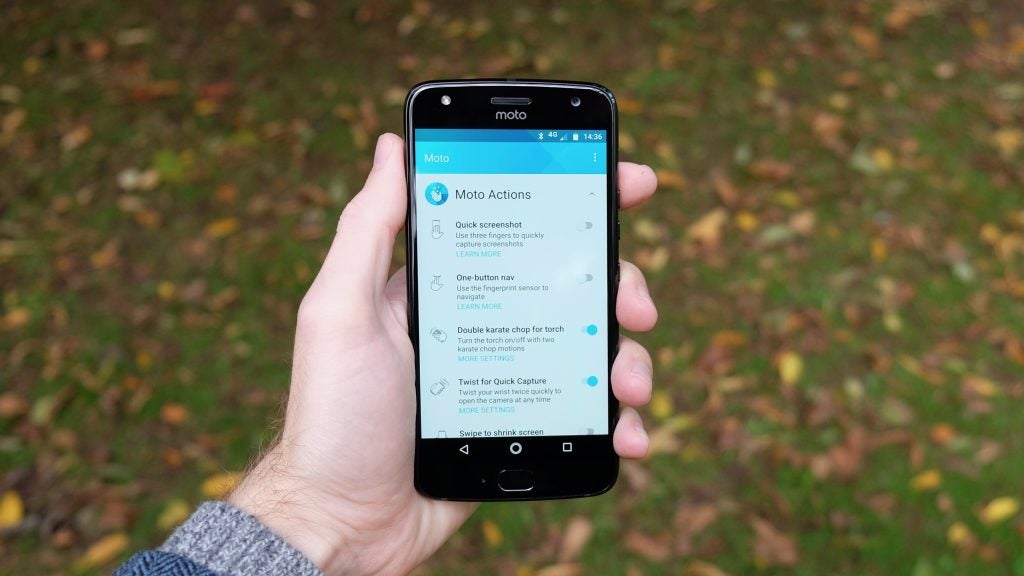
Elsewhere, Motorola’s customisation efforts are more successful. As already mentioned, Moto Display discretely pushes notification icons to the sleep screen, which you can then press and hold to preview. It would be better and more efficient with an AMOLED display, where pixels can be lit up individually, but it’s still a handy feature that you’re likely to use frequently.
Moto Actions lets you bind gestures to various shortcuts: a double karate chop motion for the torch; or a double twist for the camera. Moto Key grants secure auto-logins on frequently visited websites, while also allowing you to log in to Windows machines – but as a Mac user, I wasn’t able to test this.
Moto X4 – Camera
Motorola refers to the Moto X4’s camera setup prominently in all of its blurb, and it certainly has some attention-grabbing attributes. In practice, however, I found it to be a mixed bag.
This is the kind of dual-lens system that many manufacturers are adopting for their flagship phones, from Apple to Samsung to OnePlus and beyond. However, while most of those manufacturers tend to pair a ‘normal’ lens with a telephoto lens for that physical zoom effect, Motorola does something different.
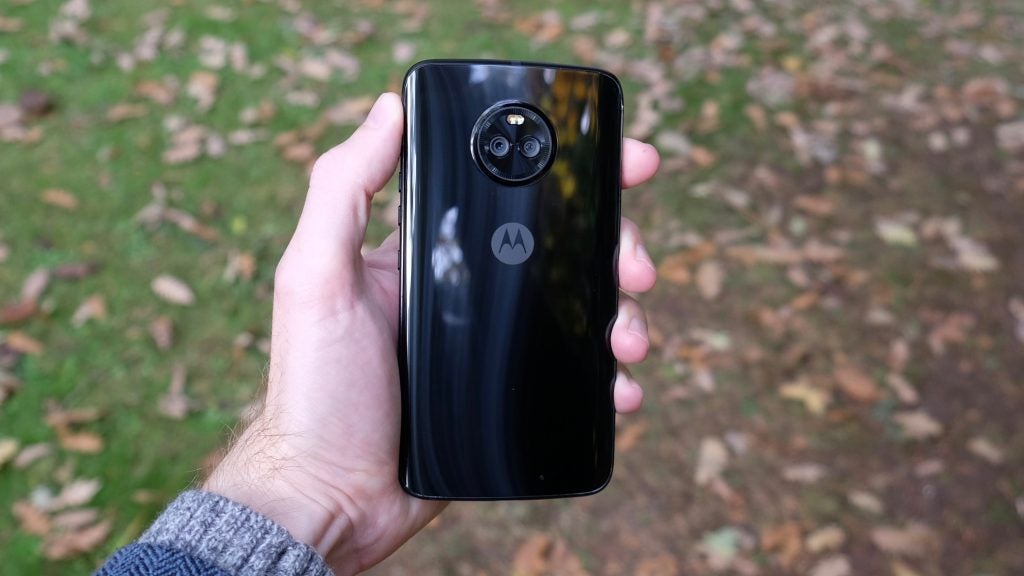
The main 12-megapixel f/2.0 lens is paired with an 8-megapixel, 120-degree wide-angle sensor. This means you’ll be able to grab those sprawling landscape shots without having to wave your phone around in panorama mode.
In practice, I found the wider, darker shots captured to be of relatively limited use. A telephoto lens would have been much handier in day to day situations.
Motorola also uses the two cameras to achieve an enhanced bokeh effect, labelled Depth-enabled in the camera UI. While you can adjust the strength of the effect with a manual slider, I found the results overly aggressive in blurring parts of the subject along with the background. The bokeh effect itself displayed some unnatural artefacts, which made it look like the X4’s camera glass needed a clean.
Beyond that, the general quality of the shots achieved from the main camera were okay. In evenly lit situations, the X4 is capable of taking detailed and well-balanced pictures, if somewhat tending towards over-exposure. But in less than ideal conditions it proved a little unreliable.
The camera app seemed slow to focus, resulting in blurry snaps on occasions when I needed to take a swift (but by no means rushed) shot. One example of this was when taking a picture of a blackboard menu in a well-lit cafe, the results of which were really quite poor.
Also concerning is the Moto X4’s somewhat hit-and-miss HDR system. In the default auto setting it’s capable of capturing well-balanced shots that are well beyond what an entry-level phone can manage. However, often I’d feel the need to turn on the mode fully and manually adjust the focus area to force the issue.
Even more puzzlingly, when viewing the photos later on my computer, it became apparent that HDR had seemingly been employed on a greter number of occasions than I’d realised – almost as if the HDR process was chugging away in the background after the fact (though I’m sure it wasn’t).
Motorola has also packaged the Moto X4 with a bunch of seemingly smart features, but they’re half-baked at best. Particularly poor is the landmark-recognition feature, which is supposed to let you gain information on whatever landmark you’re aiming the camera at.
In practice, this feature failed every time I used it. Pointing the X4 at Bristol’s distinctive skyline – complete with hills and colourful terraced housing – yielded a screen telling me that I was looking at a prehistoric monument in County Meath, Ireland. Another time, I pointed the X4’s camera at local landmark Cabot Tower, only to be told all about Rajabai Clock Tower in Mumbai. A simple cross-reference with the phone’s GPS would surely have saved it considerable embarrassment on both occasions.
The phone’s object-recognition system works in a similar way, with only slightly more helpful results. It recognised that I was pointing it at a brown and white ceramic mug, and provided links to similar mugs on Etsy and eBay, as well as (rather less relevantly) a Wikipedia definition of a flat white.
It doesn’t handle specifics well. When I pointed the camera at a Nintendo Switch Pro controller, I was offered links to Xbox One, Xbox 360, and generic wireless controllers.
This is all in the right ballpark, but without specifics the whole image recognition system is functionally useless.
It’s also worth noting that there’s a sharper-than-usual 16-megapixel selfie camera on the front of X4. It’s capable of capturing a decent amount of detail; you’ll want to feed it plenty of light, though, or things can get noisy very quickly.

Vibrant colours on this close-up

Accurate colours and good detail, despite poor lighting

The X4 camera tends to overexpose

It’s possible to get some good low-light shots, if you’re careful
Moto X4 – Battery Life
The Moto X4 comes with a 3000 mAh battery. This isn’t unusually huge for a mid-range Android phone, but nor is it small. Indeed, it’s exactly the same size as the battery found in the Moto Z2 Play, which has a bigger display and a less-efficient processor.
Given that fact, it comes as no surprise to learn that the X4 can last a day of solid use with plenty to spare. I could frequently get through a 15-hour day of moderate to heavy usage with 60% or more power left in the tank. This is better than most flagship phones, let alone fellow mid-rangers.
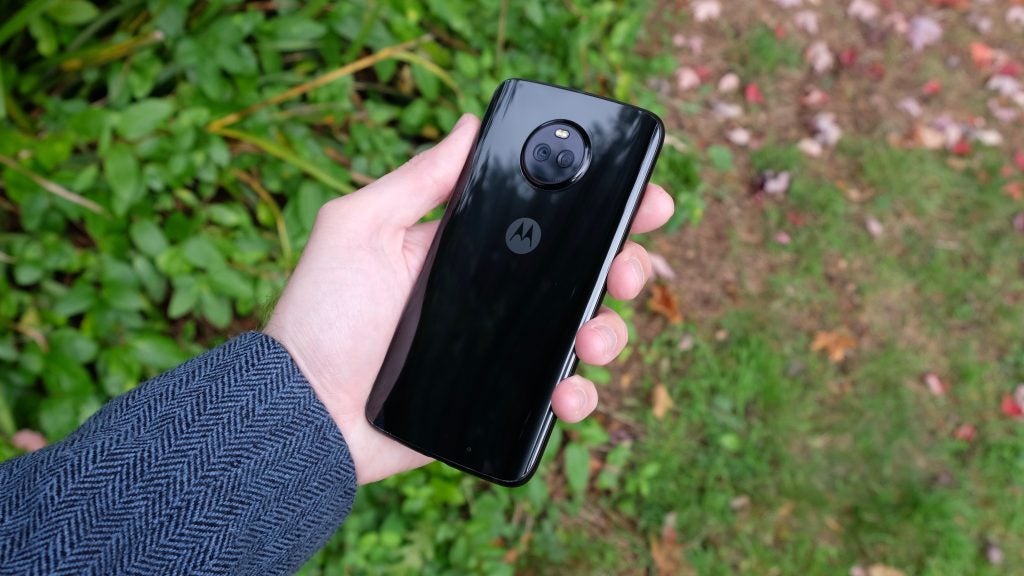
When it is time to charge, you get the benefit of Motorola’s quick-charging function: Turbo Charging. This can get you six hours of power in just 15 minutes, which is great for when you’re short on time and need a decent top-up.
Why buy the Moto X4?
The Moto X4 is a stylish and, capable mid-range smartphone. For £350, it offers much of what you’d want from a flagship phone; business users stung by rising iPhone prices might want to take a closer look.
However, the X4’s camera is far too unreliable, and while the near-stock version of Android remains a delight to use, many of Motorola’s software embellishments seem a little half-baked here.
The X4 is a classy phone, nonetheless; one that’s very easy to live with – camera quibbles aside.
But the Moto X finds itself somewhat stuck between two stools in the Moto range. If you’d rather not spend £350, the Moto G5S Plus offers a largely similar experience for around £100 cheaper. At the opposite end of the spectrum, you can get the Moto Z2 Play with its AMOLED display and Moto Mods feature for just £20 more.
Neither phone is as plain handsome as the X4, but both throw up serious questions of it on the substance and value fronts.
Verdict
The Moto X4 is a compact, stylish handset at a price that’s temptingly short of the current flagship crop. However, there are several rough edges that have us questioning its position in Motorola’s increasingly crowded range.
How we test phones
We test every mobile phone we review thoroughly. We use industry standard tests to compare features properly and we use the phone as our main device over the review period. We’ll always tell you what we find and we never, ever, accept money to review a product.
Trusted Score
Score in detail
-
Performance 7
-
Camera 6
-
Design 8
-
Battery Life 8
-
Value 6
-
Software 8
-
Calls & Sound 7
-
Screen Quality 7



